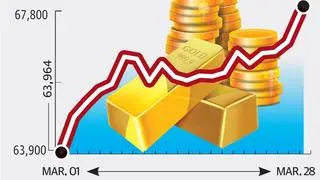Previously in this column, we discussed why trading options is optimal if you expect the underlying asset’s volatility to explode (increase). We recently received a query from a reader who wanted to understand why option prices increase when volatility increases. Accordingly, this week we discuss why prices of calls and puts typically increase when volatility explodes.
Upside benefit
Volatility refers to changes in the price of an underlying asset over a given period. Volatility is lower when an asset is trending in one direction than when it is fluctuating up and down. Previously, we discussed why futures are preferable if an asset is trending up or down. This is because futures can offer greater returns, as futures price moves nearly one-to-one with the underlying.
The maximum loss on a long call or a long put is the premium you pay to buy the option. So, when you are not confident which way the asset is likely to move, setting up long options position is more optimal because losses are limited. Therefore, demand for options ought to increase when traders expect the volatility of an underlying asset or of the market to increase. This, in turn, ought to increase option prices.
For instance, traders prefer long straddle on the run-up to the Budget. This is because a macro-level event such as the Budget can have a positive or negative impact on the financial markets, and market participants will not know the effect until the event happens. Note that a long straddle involves buying the same strike call and a put (preferably at-the-money (ATM) options). Note also that long call has a positive delta and long put has a negative delta. Therefore, a straddle has near-zero delta. So, a trader is betting on explosion of volatility to generate gains, not on the directional movement of the underlying.
There is also a conceptual reason why increase in volatility is good for options. The impact of higher volatility can push asset prices higher, whereas there is a limit to how much asset prices can go down (zero, at worst). That is, the positive impact of high volatility pushing up prices is greater than the negative impact of high volatility pushing down prices. The effect is that option value (based on a model) increases when volatility increases. Small wonder then that traders use options to bet on volatility, even though exchange-traded options are not pure bets on volatility.
Optional reading
Option price is related to volatility through the option’s gamma. Note that an option’s vega captures the sensitivity in the option price for a one percentage-point change in implied volatility. Traders prefer ATM options to bet on volatility, as such options have the highest vega. ATM options also have the highest gamma; it is the gamma that leads to higher option price when the market anticipates volatility to explode. The option will lose through time decay if realised volatility is lower.
The author offers training program for individuals to manage their personal investments









Comments
Comments have to be in English, and in full sentences. They cannot be abusive or personal. Please abide by our community guidelines for posting your comments.
We have migrated to a new commenting platform. If you are already a registered user of TheHindu Businessline and logged in, you may continue to engage with our articles. If you do not have an account please register and login to post comments. Users can access their older comments by logging into their accounts on Vuukle.